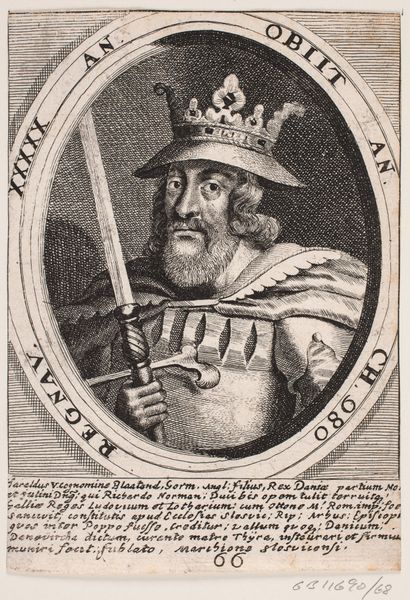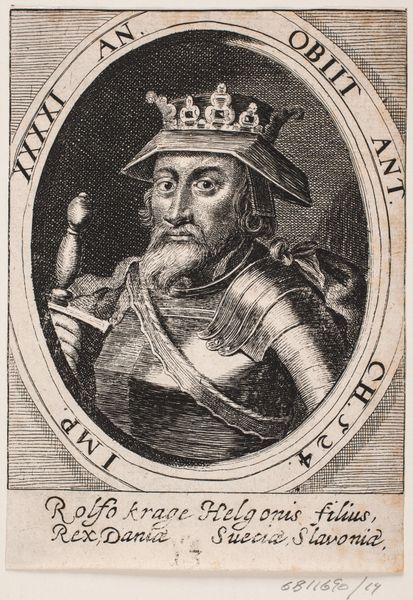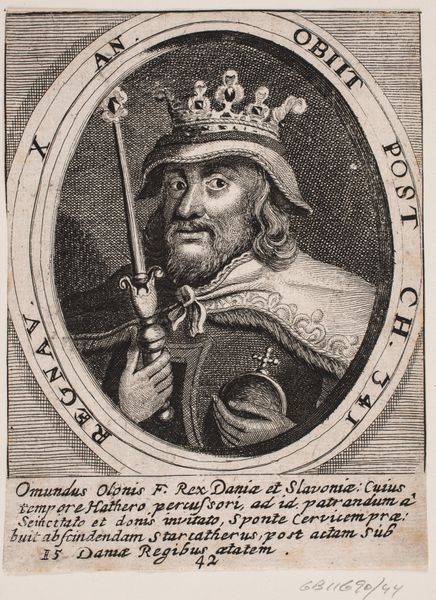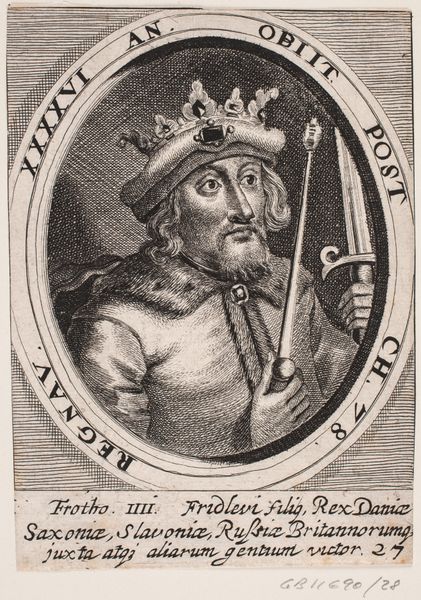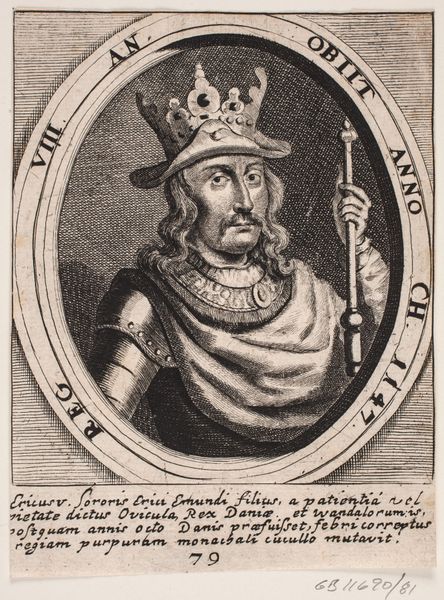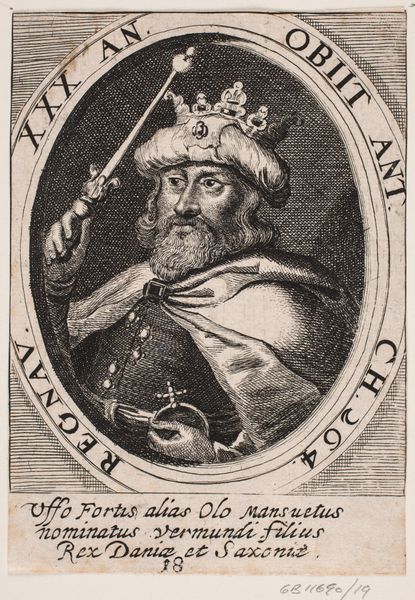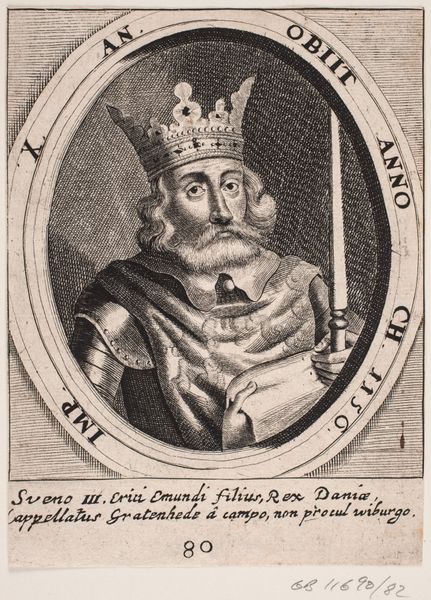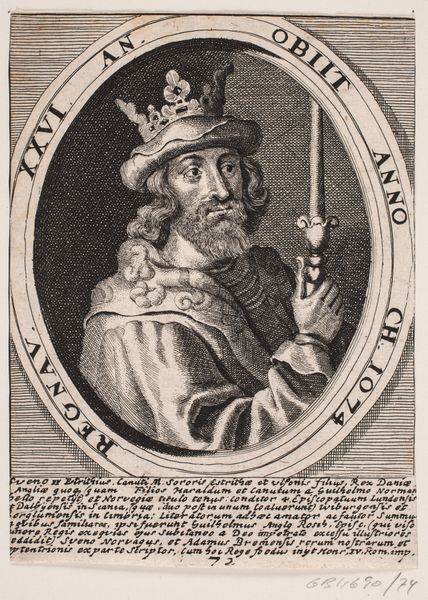
print, engraving
#
portrait
#
medieval
# print
#
northern-renaissance
#
engraving
Dimensions: 140 mm (height) x 100 mm (width) (bladmaal)
Editor: Here we have "Kong Erik II," an engraving from 1646, currently held at the Statens Museum for Kunst. It has an austere quality about it, wouldn't you say? Given the inscription, the artist’s attention to detail and the regal symbolism in this print, I'm wondering, what does this image say about the representation of power in 17th-century Denmark? Curator: Well, first, let’s think about why this print even exists. Who was the intended audience, and what was the function of circulating images of long-dead kings? Editor: Perhaps to legitimize current rulers or establish a historical narrative? Curator: Precisely. The engraving format itself speaks to a broader distribution than a painted portrait, making this a powerful tool for disseminating a specific image of Danish history. Note the inclusion of text - accessible to a learned, probably aristocratic, audience. How does that relate to your thoughts on power? Editor: The text would provide historical context and reinforce the image's authority, perhaps? I mean, seeing is one thing but reading solidifies that this is real. Curator: Indeed. The printing press allowed for a carefully constructed narrative, blending image and text, to influence public perception of historical figures and, by extension, the current sociopolitical order. Who "owns" the story, who can circulate it? Editor: That's fascinating; it highlights how images were deliberately crafted to reinforce existing power structures. It makes you question everything, doesn't it? Thanks for opening my eyes! Curator: My pleasure! It shows how art exists in dialogue with broader cultural and political forces. There are messages embedded in everything if we only knew how to listen!
Comments
No comments
Be the first to comment and join the conversation on the ultimate creative platform.

